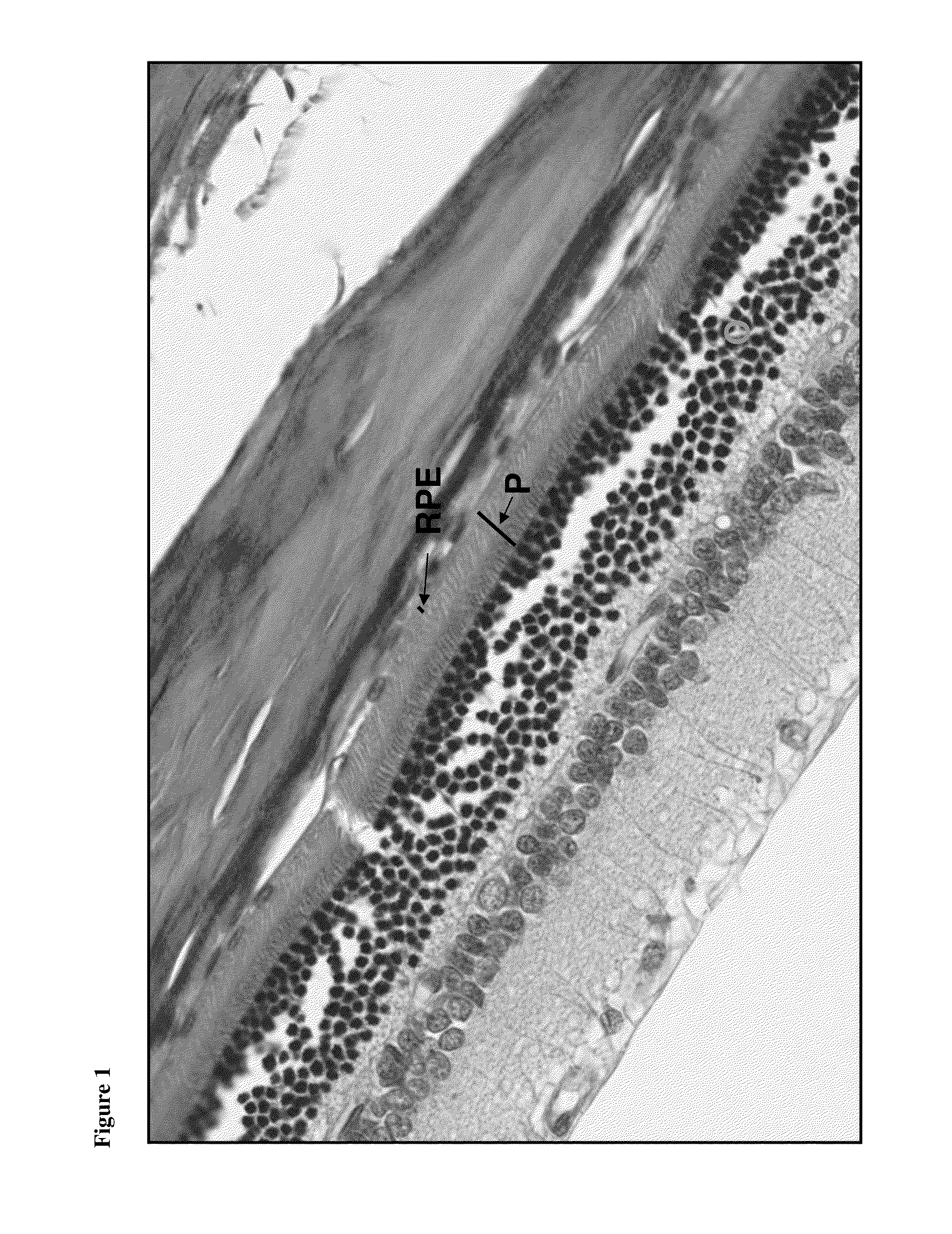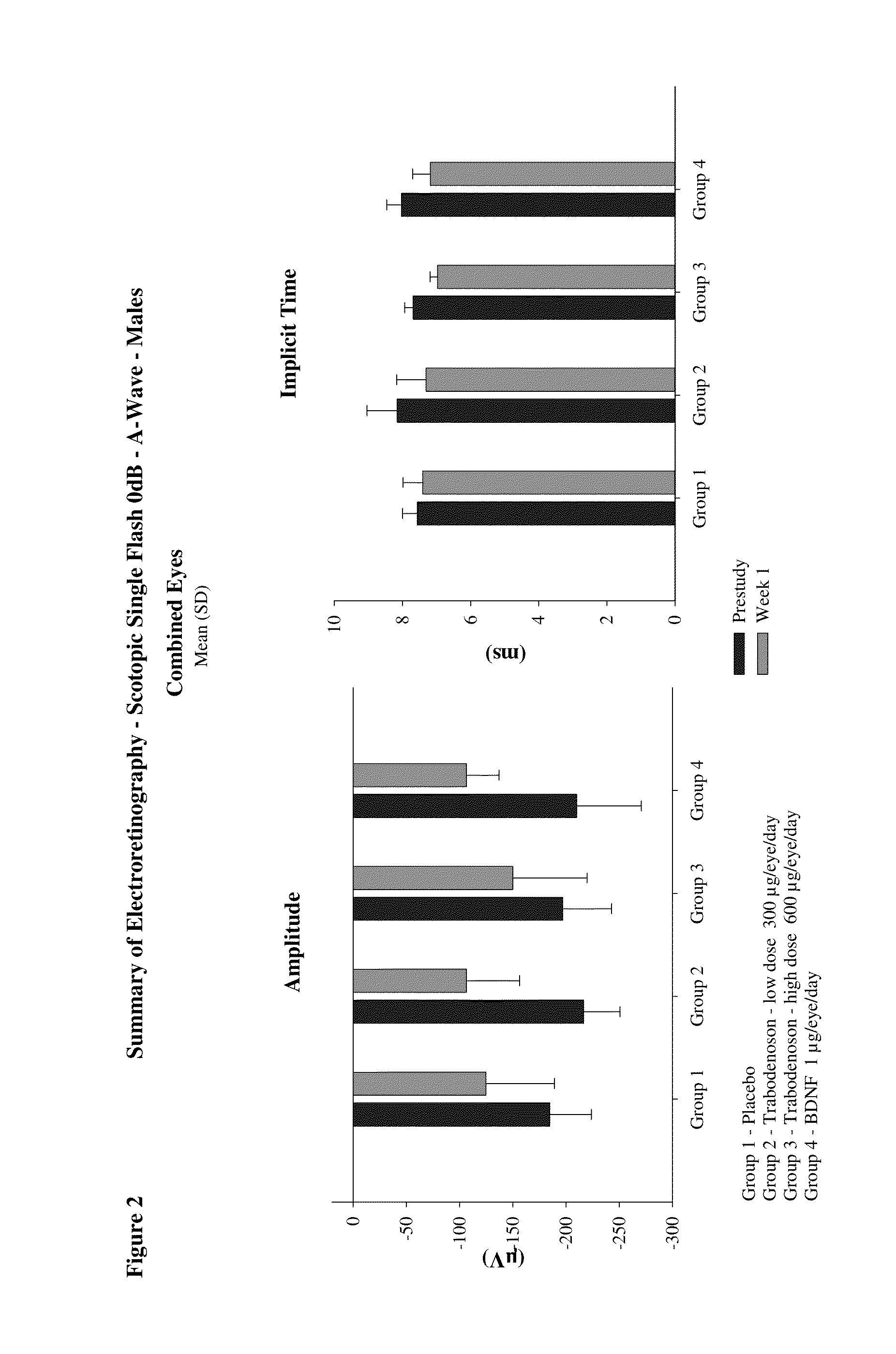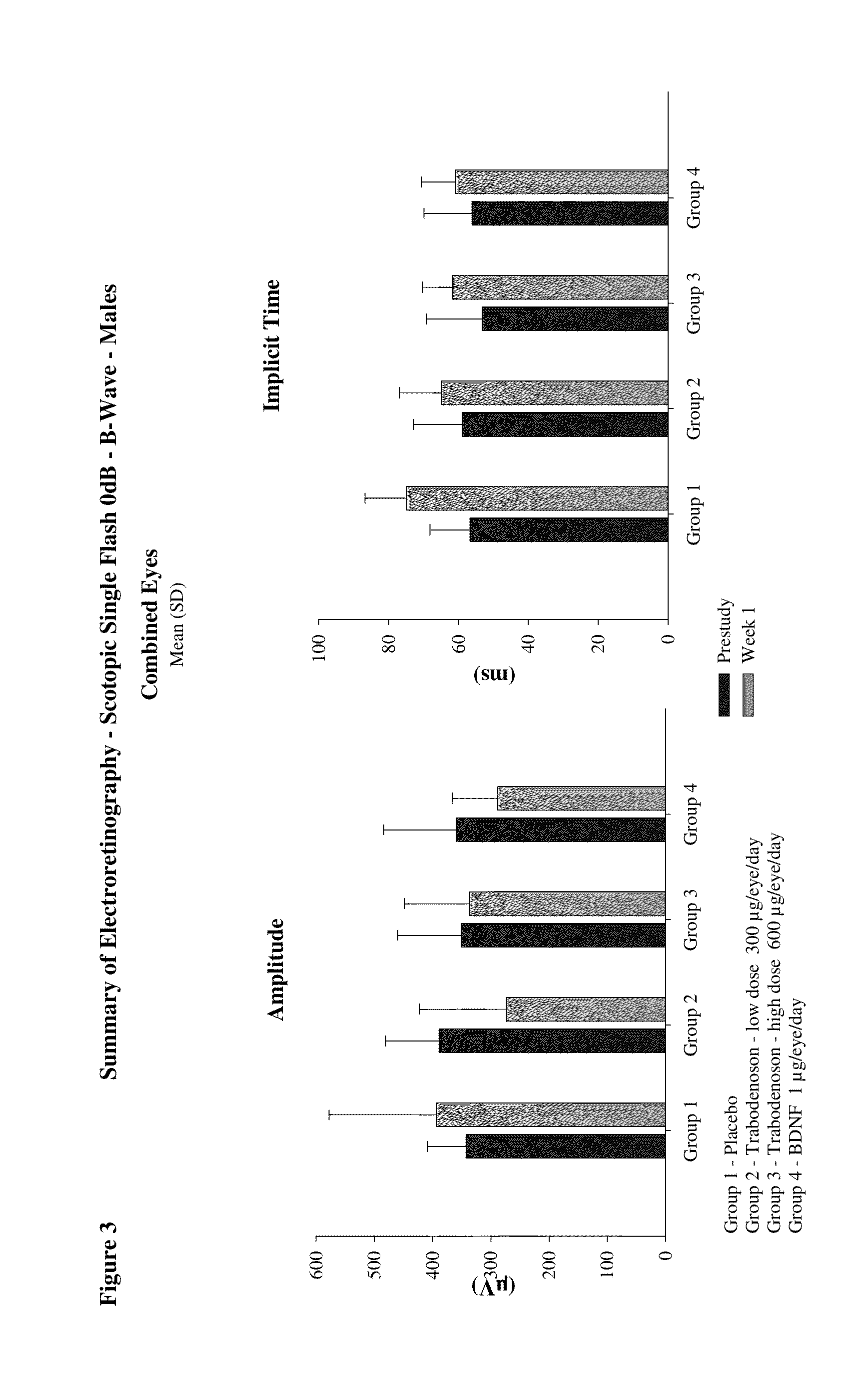Methods of preventing, reducing or treating macular degeneration
a technology of macular degeneration and treatment methods, applied in the field of preventing or treating macular degeneration, can solve the problems of higher risk of developing symptoms and tend to progress more slowly, and achieve the effect of preventing, reducing or treating age-related macular degeneration
- Summary
- Abstract
- Description
- Claims
- Application Information
AI Technical Summary
Benefits of technology
Problems solved by technology
Method used
Image
Examples
example 1
A Blue Light Damage Model in Balb / C Mice
[0153]A blue light damage study in mice was undertaken to evaluate the efficacy of trabodenoson (Compound A), a selective adenosine-A1 receptor agonist, when given by twice daily topical ocular instillation for 7 days in a mouse model of retinal damage. The rodent retina is widely used to investigate retinal diseases, as well as the response of central nervous system neurons to injury. Light-induced retinal damage (phototoxicity) selectively brings about photoreceptor cell death. Thus, this model is useful for studying the potential mechanisms underlying photoreceptor death and the subsequent retinal degeneration processes since it mimics the photoreceptor degeneration that forms the main characteristic of age-related macular degeneration.
[0154]The study design was as follows:
DoseGroupDose LevelConcen-NumberNo.Test MaterialRoute(μg / eye / day)trationof Males1PlaceboTopical0082Compound ATopical3001.5%8Trabodenoson -low dose(1.5% w / w)3Compound ATop...
example 2
A Blue Light Damage Model in Balb / C Mice
[0171]A second blue light damage study in mice was undertaken to further evaluate the efficacy of trabodenoson (Compound A), a selective adenosine-A1 receptor agonist, when given by twice or three time daily topical ocular instillation for 7 days in a mouse model of retinal damage. The rodent retina is widely used to investigate retinal diseases, as well as the response of central nervous system neurons to injury. Light-induced retinal damage (phototoxicity) selectively brings about photoreceptor cell death. Thus, this model is useful for studying the potential mechanisms underlying photoreceptor death and the subsequent retinal degeneration processes since it mimics the photoreceptor degeneration that forms the main characteristic of age-related macular degeneration.
[0172]The study design was as follows:
DoseGroupDose LevelConcen-NumberNo.Test MaterialRoute(μg / eye / day)trationof Males1PlaceboTopical0082Compound ATopical6003.0%8Trabodenoson -low...
example 3
Compound Synthesis
[0190]2′, 3′-Isopropylidene-N6-cyclohexyladenosine: A solution of 6-chloroadenosine (2.58 g) and cyclohexylamine (5 g) in ethanol (20 ml) was heated at reflux for 6 hours then cooled to room temperature. The reaction mixture was concentrated in vacuo and the resultant residue was diluted with water (50 ml) and ethyl acetate (300 ml). The organic layer was separated and the aqueous layer was extracted with ethyl acetate (2×50 ml). The combined organic layers were washed with water (1×30 ml), dried over sodium sulfate, concentrated in vacuo and dried under vacuum to provide N6-cyclohexyladenosine as a white solid (2.600 g). N6-Cyclohexyladenosine (2.6 g) was diluted with acetone (30 ml) and to the resultant solution was added 2, 2-dimethoxypropane (12 ml), followed by D-camphorsulphonic acid (3.01 g) and the mixture was allowed to stir at room temperature for 18 hours. The reaction mixture was concentrated in vacuo and the resultant residue was diluted with ethyl ace...
PUM
| Property | Measurement | Unit |
|---|---|---|
| Fraction | aaaaa | aaaaa |
| Fraction | aaaaa | aaaaa |
| Fraction | aaaaa | aaaaa |
Abstract
Description
Claims
Application Information
 Login to View More
Login to View More - R&D
- Intellectual Property
- Life Sciences
- Materials
- Tech Scout
- Unparalleled Data Quality
- Higher Quality Content
- 60% Fewer Hallucinations
Browse by: Latest US Patents, China's latest patents, Technical Efficacy Thesaurus, Application Domain, Technology Topic, Popular Technical Reports.
© 2025 PatSnap. All rights reserved.Legal|Privacy policy|Modern Slavery Act Transparency Statement|Sitemap|About US| Contact US: help@patsnap.com



